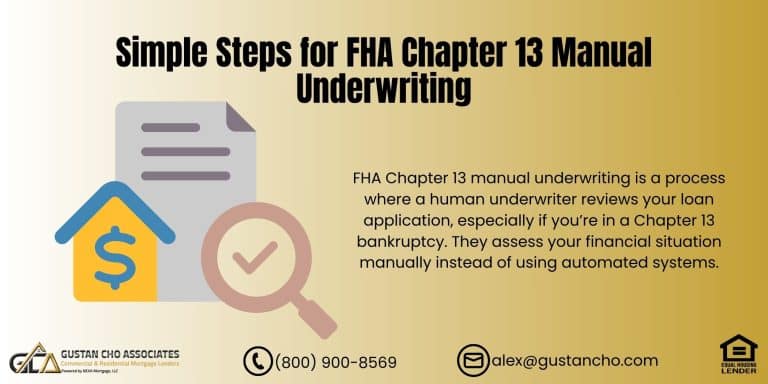Understanding the mortgage approval process can feel overwhelming, particularly due to the constant updates and modifications in lending regulations. Since the housing crisis in 2008, getting approved for a mortgage loan has become more detailed and thorough—but that doesn’t mean it has to be stressful. In this article, we’ll break down the mortgage approval process into manageable steps, explain recent regulatory changes clearly, and share helpful tips to ensure your homebuying journey goes smoothly.
Understanding the Mortgage Approval Process Today
You might imagine endless paperwork and confusing terms when someone mentions the mortgage approval process. But today’s rules exist to protect you, the borrower, and lenders from financial risks. Regulations implemented after the Great Recession were designed to make mortgages safer and more affordable for homebuyers. However, these new rules also increased the paperwork lenders must collect to verify you can repay the loan.
What’s Changed in the Mortgage Approval Process?
The 2008 housing crash drastically reshaped mortgage lending. Before that, getting a mortgage was easier but riskier. Many borrowers qualified for loans they couldn’t afford long-term, leading to widespread foreclosures. The newly created SAFE ACT established licensing guidelines for lenders nationwide. To avert a similar crisis, the government implemented stricter mortgage regulations, such as the Dodd-Frank Act, and created the Consumer Financial Protection Bureau (CFPB) to monitor lenders.
Currently, lenders enforce more rigorous criteria to confirm that you can afford your monthly payments. Banks must carefully verify your income, debts, credit score, and employment. These strict guidelines reduce risks for both you and your lender.
Pre-Approval – Find out how much home you can afford in your state
Apply Now And Get recommendations From Loan Experts
Steps in the Mortgage Approval Process
Here’s a simple, step-by-step breakdown of what you can expect in the mortgage approval process:
1. Pre-Approval
Pre-approval is the first and one of the most important steps in your mortgage approval process. You’ll submit basic financial information, like income documents, debts, and assets, to a lender. Based on this info, they’ll estimate how much you can borrow. Getting pre-approved helps you know your budget clearly before shopping for a home.
2. Home Search and Offer
After pre-approval, you’ll search for homes within your budget. Once you find the right home, you’ll make an offer. If accepted, you’ll move forward to a formal mortgage application.
3. Formal Mortgage Application
During this step, you’ll officially apply for your mortgage. The lender reviews your documents in detail and confirms your financial information.
4. Processing and Underwriting
Your lender’s underwriting team reviews your entire financial picture, verifying your employment, income, debts, assets, and credit history. They ensure the loan meets regulatory guidelines.
5. Loan Approval and Conditions
After the underwriting stage, your loan is conditionally approved in the mortgage approval process. This means the lender thinks your loan is good, but they might need extra papers or more information before they give you the final approval.
6. Clear to Close
After meeting all conditions, your loan is “clear to close.” Your lender will schedule your closing appointment.
7. Closing
You’ll sign your loan documents at closing, and your mortgage officially begins. Congratulations, you’re now a homeowner!
Documentation You’ll Need
Be ready with these key documents to speed up your mortgage approval process:
- Recent pay stubs
- Two years of tax returns (W2s or 1099s)
- Bank statements (2 months)
- Credit reports and scores
- Employment verification
- Information about debts (loans, credit cards, student loans)
Having these documents handy simplifies the mortgage approval process and avoids unnecessary delays.
Understanding Debt-to-Income Ratio (DTI)
One significant update to the mortgage approval process involves your debt-to-income ratio (DTI). DTI evaluates the proportion of your monthly earnings allocated to debt payments. As of recent guidelines, most loans cap your DTI at 43%, including your future mortgage payment and other monthly debts. Keeping your DTI low increases your chances of mortgage approval.
New Limits on Lender Fees
Another significant change in the mortgage approval process is the limit on lender fees. Lenders can now charge a maximum of 3% of your total loan amount in points and fees. This regulation protects borrowers from excessive fees and hidden charges.
Loans and Mortgage Products Eliminated
After 2008, certain high-risk mortgage loans were eliminated:
- Balloon payment loans (large lump-sum payments at the end)
- 40-year mortgages (due to higher default risks)
- Interest-only loans (that increased principal over time)
Knowing these changes helps avoid confusion and sets realistic expectations during your mortgage approval process.
Recent Updates in 2025
The mortgage approval process continues evolving. Recently, regulatory bodies like the CFPB have emphasized borrower protection even more, ensuring transparency and fairness. Here’s what’s new in 2025:
- Lenders must clearly explain all loan terms upfront
- Increased transparency in mortgage costs and fees
- Stricter enforcement of credit verification standards
- Enhanced borrower rights to dispute errors
These updates provide stronger consumer protections and improve transparency throughout the mortgage approval process.
Tips for a Smooth Mortgage Approval Process
To make your mortgage approval process quicker and smoother, follow these simple tips:
- Monitor your credit: Ensure your credit score is accurate and high enough before applying.
- Avoid new debt: Never open new credit cards or finance large purchases before closing.
- Maintain stable employment: Changing jobs during the mortgage approval process can cause delays.
- Don’t make large cash deposits: Lenders need to verify the source of all your funds.
- Communicate regularly with your lender: Keep them updated about any changes to your financial situation.
Closing Process – Complete the final steps and become a homeowner
Apply Now And Get recommendations From Loan Experts
Real-Life Scenario: A Mortgage Approval Success Story
Sarah, a first-time homebuyer, was eager to find her dream home but unsure about navigating the mortgage approval process. With a credit score of 700, stable employment, and a debt-to-income ratio below 43%, she knew she was in a good position but wanted to make sure she had everything in order.
To help streamline her process, she reached out to Gustan Cho Associates, a team known for their expertise in residential mortgages. Their knowledgeable staff guided her through every step, from understanding her credit situation to assembling the necessary documentation. They helped Sarah present her minor credit card debt in a way that did not overshadow her overall financial health.
With the support of Gustan Cho Associates, Sarah prepared her documents thoroughly and maintained transparent communication with her lender. They assisted her in clarifying any uncertainties about her financial history, ensuring that her application was robust and compelling.
Sarah’s mortgage approval process was swift, thanks to her meticulous preparation and the expertise of Gustan Cho Associates. She received her approval quickly and celebrated closing on her new home within just 30 days. This success story underscores the importance of clear preparation, honest communication, and proper guidance.
Tips to Speed Up the Mortgage Approval Process
If you’re looking for fast approval, here’s what helps:
- Organize and submit all paperwork immediately.
- Respond quickly to lender requests.
- Provide clear and accurate financial information upfront.
- Choose a knowledgeable lender who understands your situation, particularly if you have distinct financial circumstances.
Mortgage brokers, like Gustan Cho Associates, are experts in managing fast, efficient approvals, even with challenging financial histories.
How Gustan Cho Associates Simplifies Your Mortgage Approval Process
Navigating the mortgage approval process doesn’t have to be stressful. At Gustan Cho Associates, our team of experienced mortgage professionals understands current lending guidelines, recent regulatory changes, and exactly what it takes to get your loan approved quickly.
We specialize in loans other banks often turn down, offering options for:
- FHA, VA, and USDA loans
- Non-QM and alternative financing solutions
- Financing options for individuals with less favorable credit ratings or recent economic challenges.
- Flexible debt-to-income ratio approvals
Our mortgage approval process is streamlined and transparent. We guide you every step of the way, clearly explaining requirements, timelines, and expectations. With us, you’ll know exactly where you stand, what documents you need, and how to overcome potential challenges.
Ready to Start Your Mortgage Approval Process?
Understanding today’s mortgage approval process and recent regulatory updates will make your home-buying experience smoother and faster. If you’re ready to begin or have questions, contact Gustan Cho Associates at 800-900-8569 or text us anytime for a faster response. You can also email us at gcho@gustancho.com.
We’re here seven days a week, evenings, weekends, and holidays. Let’s make your dream of homeownership easy, understandable, and achievable.
Loan Program Eligibility – Discover state-specific grants, assistance, or special programs
Apply Now And Get recommendations From Loan Experts
Frequently Asked Questions About the Mortgage Approval Process:
Q: What is the Mortgage Approval Process?
A: The mortgage approval process is the step-by-step journey to getting a home loan. It includes pre-approval, application, underwriting, and final loan approval before closing on your home.
Q: How Long does the Mortgage Approval Process Take?
A: The process of getting a mortgage approval usually takes 30 to 45 days, but it can be expedited if you have all your paperwork prepared and reply swiftly to the lender’s requests.
Q: What Documents do I Need for the Mortgage Approval Process?
A: To get approved, you’ll need pay stubs, tax returns, bank statements, credit reports, employment verification, and debt information. Having these ready can speed up the process.
Q: What Credit Score do I Need for Mortgage Approval?
A: Many lenders look for a 620 credit score or higher, although specific programs, such as FHA loans, permit scores starting from 580. The higher your score, the better your interest rate.
Q: What is the Debt-to-Income Ratio (DTI), and Why Does it Matter?
A: Your debt-to-income ratio assesses the amount of your monthly obligations in relation to your earnings. Most loans require a DTI of 43% or lower, but some lenders offer flexibility based on your overall financial situation.
Q: Can I get a Mortgage if I’m Self-Employed?
A: Yes! The mortgage approval process for self-employed borrowers may require bank statements, tax returns, and profit & loss statements instead of W-2s to prove income.
Q: What Happens if My Mortgage Application Gets Denied?
A: If your mortgage approval process hits a roadblock, your lender will explain why. Common reasons include low credit scores, high DTI, or insufficient income. Working with a flexible lender like Gustan Cho Associates can help you find alternative financing options.
Can I Switch Jobs while My Mortgage Application is Being Processed?
A: It’s best not to switch jobs during the process, as lenders verify employment before closing. If you must change jobs, talk to your lender first to avoid delays.
Q: Do I Need a Big Down Payment to Get Approved?
A: Not always! While 20% down is common for conventional loans, programs like FHA, VA, and USDA loans allow low or even zero down payments for eligible buyers.
Q: How Can Gustan Cho Associates Help Me with My Mortgage Approval Process?
A: Gustan Cho Associates specializes in fast approvals, flexible loan options, and helping borrowers with unique financial situations. Whether you have low credit, high DTI, or need a non-QM loan, they’ll guide you through every step.
This blog about “How Regulation Changed the Mortgage Approval Process” was updated on March 18th, 2025.
Take First Step Toward Making Your Dream A Reality
Apply Now And Get recommendations From Loan Experts









